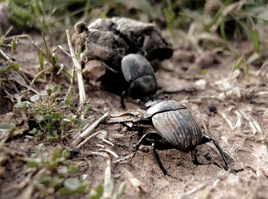Why are rats
and mice pests?
REQUEST A CALLBACK
Please fill in the form below for a free no obligation site survey and we will ask our friendly consultants to give you a call.
Rats & Mice
Rats and mice can suffer from and carry diseases that can be spread to humans. One of which is Weils’s Disease, which is passed on by rat urine. They can contaminate food with their droppings and urine or by gnawing. They can also cause damage to property, pipes and electrical cables which has sometimes resulted in floods or fires. An indication that you have rats or mice is the finding droppings, footprints or tail marks or through holes in walls, floors or burrows outside.
Ways to prevent against an infestation of rats and mice is to keep areas clean and tidy and make sure that food is kept in plastic containers and waste is disposed of in either a plastic or metal bin with a close-fitting lid. Dispose of general waste regularly to prevent rodents building nests. If you are carrying out any building works involving drainage, don’t leave drains open, seal all gaps or holes in your building where rodents can gain access.
If a problem is identified, upon your agreement; we will conduct the following:
- After completing a survey, an agreed number of bait boxes are installed to the site.
- Internally mice bait stations are installed in the high-risk areas, such as canteens, kitchens, riser cupboards, boiler rooms.
- All external bait boxes (rat boxes) are “tethered”(fixed) for health and safety purposes, (externally toxic rodenticides are used to “kill” off the rats when the bait is eaten. Only block style rodenticide is used in externals in case an animal or young ch
- The traps are baited and set
- They are installed from approximately Monday to Friday
- We visit the site on Monday, Wednesday and Friday. The dead rodent is removed and disposed of into a specialist container within the vehicle, returned to our depot and put into the freezer until such time where they are disposed of in an environmentally friendly manner.
Pest Control Top Tips

Rats & Mice
Rats and mice can suffer from and carry diseases that can be spread to humans. One of which is Weils’s Disease, which is passed on by rat…

Fox Trapping
December to February is one of the most common times that you may experience a problem with foxes as this is their breeding season. however, they are…

Pigeons
Many people see feral pigeons as part of our natural wildlife, as they can become quite tame and will take food from your hand. However, they can be…

Wasps
Wasps nests are a problem, as they can contain up to 10,000 wasps! Being stung by a wasp is not only painful but can be life threatening if you are…

Moths
Clothes moths, otherwise known as Tineola biselliella, don’t fly towards light as other moths do. Instead, they will spend months hidden in…

Ants
Ants have a variety of nesting habits, some like to build their nests in soil, others behind moldings, baseboards and counter tops; they feed on…

Bed Bugs
Bed bugs are small, nocturnal, wingless insects that feed on human blood and other warm-blooded hosts. They are oval in shape and grow up to 4-5mm…

Cockroaches
Cockroaches are a high risk pest, they carry and can spread serious illnesses including salmonella, dysentery, gastro-enteritis and typhoid, with…


